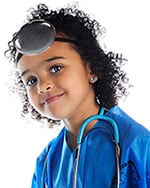FASDs: Partnerships & Collaborations
CDC partners and collaborates with others to improve practice and education and enhance data collection to prevent alcohol use during pregnancy and to help individuals living with fetal alcohol spectrum disorders (FASDs). CDC supports the following activities:
CDC-RFA-DD22-2201, National Partnerships to Address Prenatal Alcohol and Other Substance Use and Fetal Alcohol Spectrum Disorders, intends to build a collaborative framework of national partner organizations that contribute to 1) reducing prenatal alcohol and other substance use, 2) improving support services and access to care, and 3) improving identification and health of children and families with FASDs.

- American Academy of Family Physicians
- American Academy of Pediatrics
- American College of Obstetricians and Gynecologists
- University of Alaska Anchorage
- University of Nevada, Reno
- University of Texas at Austin
- Montana State University
- FASD United (formerly NOFAS)
- Oak Ridge Associated Universities, Inc.
Period of performance: 9/30/2022–9/29/2026
CDC-RFA-DD22-2202, I-FASD: Understanding Clinical Data and Pathways to Inform Surveillance of Children with Fetal Alcohol Spectrum Disorders, is a feasibility project that will characterize information accessible within health-related data systems for children suspected of or diagnosed with FASDs, as well as describe the referral, evaluation, and diagnosis processes. Findings will be used to inform the development of future public health surveillance activities.
Recipients:
- Emory University
- Minnesota Department of Health
Period of performance: 9/1/2022–8/31/2025

CDC-RFA-OT18-1802, Strengthening Public Health Systems and Services through National Partnerships to Improve and Protect the Nation’s Health, is intended to strengthen the nation’s public health infrastructure, ensure a competent, current, and connected public health system, and improve delivery of essential services through capacity building assistance. The goal is to fund organizations that have the capability, expertise, resources, reach, and history of providing capacity building relevant to implementing key strategies, activities, and outcomes. Through this funding opportunity, NCBDDD is able to reach pediatric providers to develop and implement educational and capacity-building resources for the prevention, early identification, and care of children with FASDs and their families.
Recipient:
- American Academy of Pediatrics
Period of performance: 8/1/2018–7/31/2023

CDC and the Administration for Children and Families (ACF) Children’s Bureau are working together to improve the identification and care of children who were exposed to alcohol and other drugs during pregnancy. There are approximately 3.4 million children in the U.S. child welfare system, with 415,000 of these children in foster care. ACF estimates that 6 out of 10 children in foster care come from homes where alcohol and/or other drugs are misused.
The goal of the Prenatal Alcohol and Other Drug Exposures in Child Welfare project is to improve the health and developmental outcomes of children in the welfare system who were exposed to alcohol and other drugs during pregnancy. Over the course of this multi-year project, activities included the following:
- Completion of a descriptive study exploring current knowledge, attitudes, policies, practices, and needs of child welfare agencies for identifying and caring for children who were exposed to alcohol and other drugs during pregnancy, as well as caring for their families
- Development of an online toolkit of resources is in progress. This toolkit will be based on the best available evidence of success for training professional staff, families, and foster families to promote identification, referral, and care of children who were exposed to alcohol and other drugs during pregnancy to reduce risk of harm as well as to improve child and family outcomes.